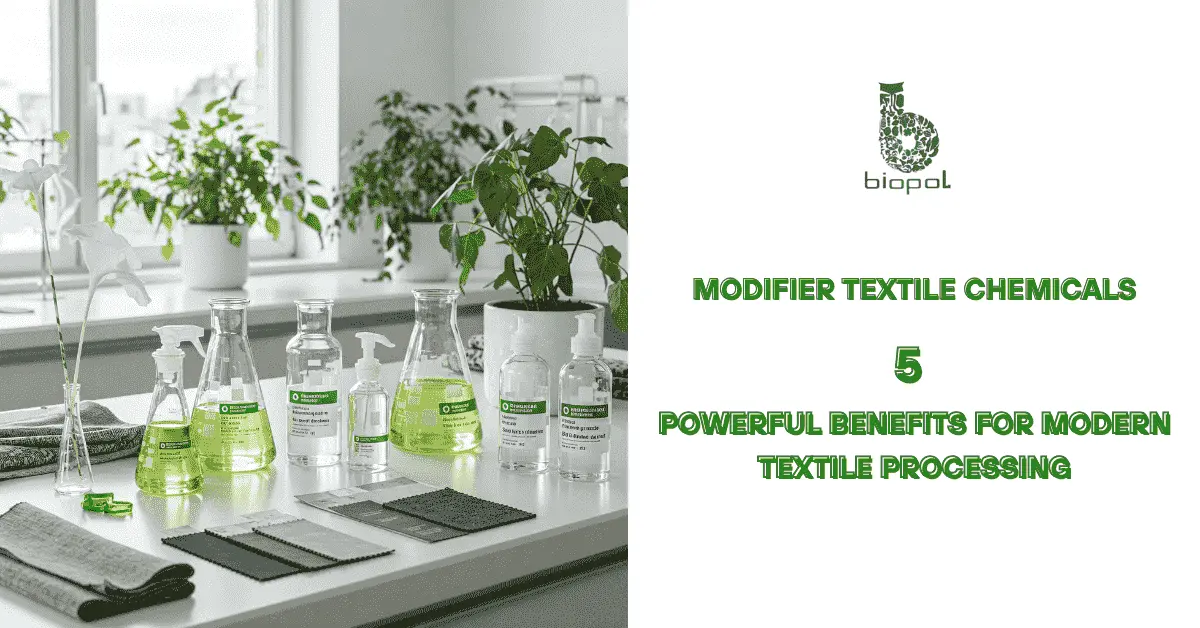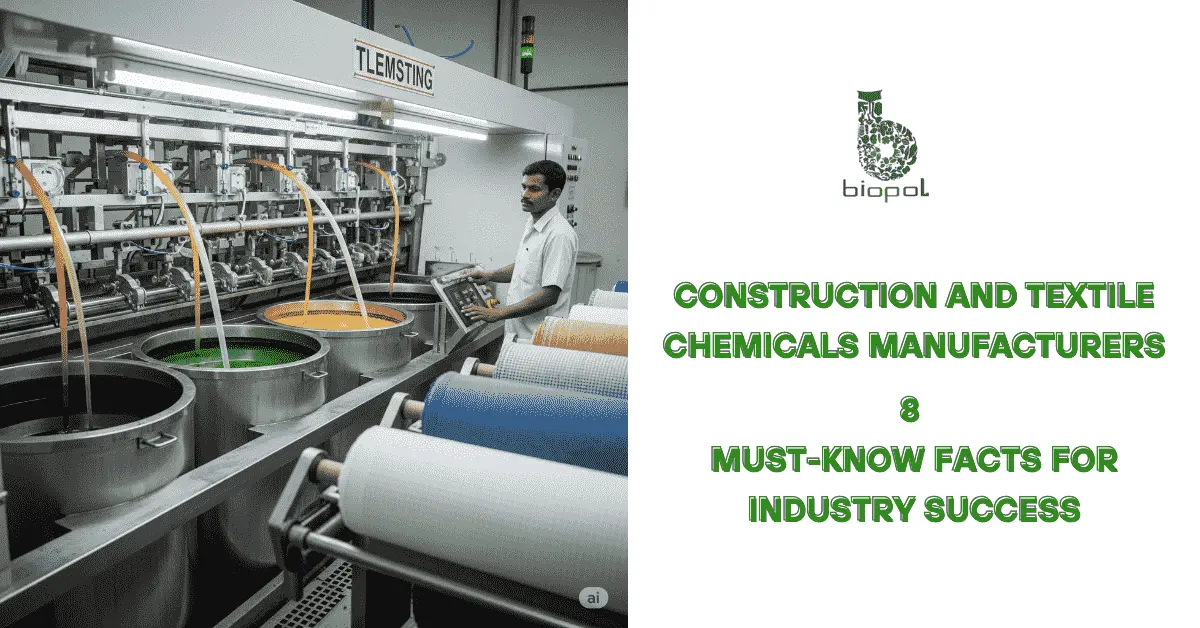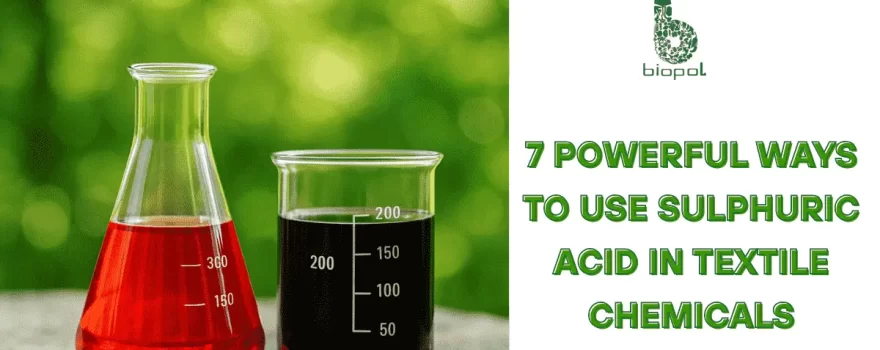
Sulphuric acid: It’s a powerhouse chemical. It fuels many industries. Think fertilizers, plastics, and, yes, textiles. In textile processing, it’s indispensable. It acts as a catalyst. It adjusts pH. It even plays a part in fiber treatment. It serves as a crucial component throughout the entire process. Its significance lies in its ability to enhance efficiency. It improves product quality. It’s a true multi-tasker. This substance is more than just a chemical; it embodies a solution. It’s the backbone of many textile processes. It’s a fundamental component. It’s a workhorse. It’s natural to Use Sulphuric Acid in Textile Chemicals.
Table of Contents
Why Use Sulphuric Acid in Textile Chemicals
- Strong acidity – readily donates protons, making it highly reactive.
- Composition – consists of hydrogen, sulfur, and oxygen, giving it powerful chemical properties.
- Facilitates chemical reactions – acts as a catalyst in textile processes.
- Dehydrating agent – removes water from substances, aiding in fiber treatment.
- Oxidizing agent – helps break down impurities and modify fiber structures.
- Versatile in textile processing – adapts to different roles, from dyeing to finishing.
- Enhances fiber and dye interactions – ensures efficient absorption and durability of colors.
Sulphuric acid’s reactivity and adaptability make it a key player in textile manufacturing, driving essential chemical processes.
Role of Sulphuric Acid in Textile Manufacturing
To Use Sulphuric Acid in Textile Chemicals, it means to span various textile processing stages. It ensures that fibers, dyes, and finishes interact optimally, leading to high-quality, durable textiles.
| Stage | Role of Sulphuric Acid |
| Fiber Treatment | Removes impurities, modifies fiber structure, improves dye uptake. |
| Dyeing | Acts as a catalyst, helps dyes bind to fibers, controls the dyeing process. |
| Finishing | Adjusts fabric properties, improves softness or stiffness, enhances final texture. |
Desizing and Scouring
Desizing and scouring are essential steps in preparing textiles for further processing. To Use Sulphuric Acid in Textile Chemicals during these processes helps remove impurities and enhances fabric quality.
- Desizing removes starch, which is often added to yarns for weaving.
- Sulphuric acid helps break down starch, making it easier to wash away.
- Scouring eliminates natural oils and waxes that could interfere with dye absorption.
- Sulphuric acid, in controlled amounts, aids in breaking down these impurities, ensuring effective removal.
- Clean fabrics absorb dyes better, resulting in more even and vibrant colors.
- Proper desizing and scouring set the stage for high-quality textiles by enhancing dye adhesion and overall finish.
These steps are fundamental to achieving durable, well-dyed, and high-quality fabrics.
Dyeing and pH Regulation

Dyeing is the process where fabrics gain their color, and sulphuric acid plays a crucial role in ensuring optimal dye absorption.
- Sulphuric acid aids dye bonding, acting like glue to help colors adhere to fibers.
- pH control is essential for proper dye uptake. Sulphuric acid maintains the right pH balance.
- Different dyes require specific pH levels to achieve their intended shades. Sulphuric acid helps create these ideal conditions.
- A balanced pH allows for a diverse color palette, enabling vibrant and long-lasting hues.
- The result? Textiles that are not only visually striking but also durable, ensuring the colors stay vivid over time.
Sulphuric acid is a fundamental component of the dyeing process, ensuring consistency, vibrancy, and longevity in textiles.
Textile Finishing
Textile finishing is the final step in fabric processing, giving textiles their desired properties for aesthetics, comfort, and durability. Sulphuric acid plays a role in several finishing techniques.
- Used in fabric softening and wrinkle resistance, acting like a final polish.
- Modifies fiber structure, enhancing softness and flexibility.
- Helps improve wrinkle resistance, providing long-lasting fabric quality.
- Application varies based on fabric type and finishing goals, making it a versatile tool.
- Ensures fabrics are not just visually appealing but also functional and durable.
Sulphuric acid is a valuable component in textile finishing, contributing to high-quality fabrics that maintain their look and performance over time.
Wastewater Treatment in Textile Production
Textile production generates wastewater containing various pollutants, and sulphuric acid plays a crucial role in its treatment.
- Neutralizes alkaline effluents, ensuring pH balance for safe discharge.
- Adjusts pH levels, making the water suitable for further treatment.
- Protects the environment by reducing harmful chemical impact.
- Ensures compliance with regulations, promoting responsible manufacturing.
- Works alongside other treatment processes to remove pollutants and prepare water for safe disposal or reuse.
Sulphuric acid is an essential component of textile wastewater treatment, minimizing environmental impact and supporting sustainable production.
Safety Measures and Handling
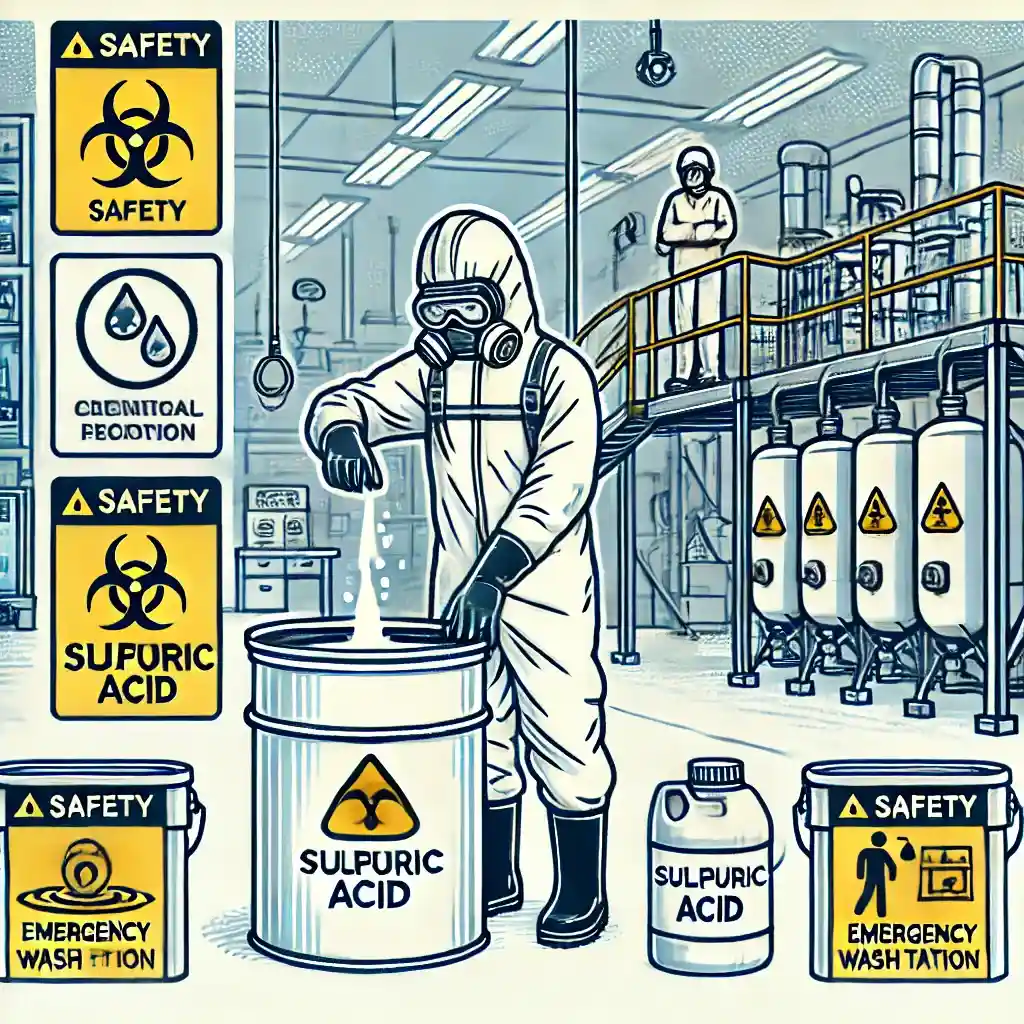
Sulphuric acid is powerful and essential, but its safe handling is non-negotiable in textile plants. Strict protocols ensure worker safety, environmental protection, and responsible usage.
- Personal Protective Equipment (PPE) is mandatory – gloves, goggles, and protective clothing shield workers from exposure.
- Proper ventilation reduces fume inhalation, ensuring a safer workspace.
- Storage in designated areas with clearly labeled containers prevents accidents.
- Spill response plans are essential – all personnel must be trained to handle leaks or spills efficiently.
- Regular safety training ensures workers understand hazards and best practices, fostering a safety-first culture.
making sure to Use Sulphuric Acid in Textile Chemicals responsibly protects workers, the environment, and the community, making it a critical aspect of textile plant operations.
Environmental Impact and Sustainability Challenges
Sulphuric acid is a valuable tool in textile production, but its environmental impact raises concerns. Sustainable practices and innovation are crucial for minimizing its footprint.
- High energy consumption in sulphuric acid production contributes to its ecological footprint.
- Potential risks of spills and leaks can cause environmental hazards.
- Contribution to acid rain and harm to aquatic life underscores the need for careful handling.
- Sustainability efforts in the textile industry focus on:
- More efficient processes to reduce sulphuric acid usage.
- Exploring alternative chemicals with lower environmental impact.
- Improving waste treatment to mitigate pollution.
Finding a balance between industrial needs and environmental responsibility is essential. Sustainable textile practices ensure the industry evolves while protecting the planet for future generations.
Regulatory Compliance and Industry Standards
To Use Sulphuric Acid in Textile Chemicals for textile processing is governed by strict regulations to ensure safety and environmental protection. Compliance is not optional—it’s the law.
- Regulations vary by region – international guidelines, national laws, and local rules create a complex compliance landscape.
- Key regulatory areas include:
- Handling and storage protocols to prevent accidents.
- Disposal and wastewater treatment to minimize environmental impact.
- Emission controls to reduce air pollution.
- Industry standards often exceed legal requirements, promoting best practices and responsible chemical use.
- Staying up to date with regulations is a continuous process, ensuring safe and sustainable textile manufacturing.
Regulatory compliance ensures the textile industry minimizes risks, protects workers, and operates responsibly while maintaining high-performance standards.
Innovations and Future Trends
To Use Sulphuric Acid in Textile Chemicals for ensuring progress with new technologies focused on sustainability and efficiency.
- Green chemistry is leading the way, designing eco-friendly chemicals and processes to minimize hazardous substances.
- Nanotechnology enables precise chemical application, reducing waste and improving efficiency.
- Automation and AI are streamlining processes, enhancing accuracy and reducing human error.
- Sustainable alternatives to traditional chemicals are emerging, lowering the industry’s environmental footprint.
- New research and technology are paving the way for high-quality textiles produced responsibly.
The future of textile chemical processing is about innovation, sustainability, and efficiency, ensuring the industry meets modern demands while protecting the planet.
Role of Sulphuric Acid in Modern Textile Processing
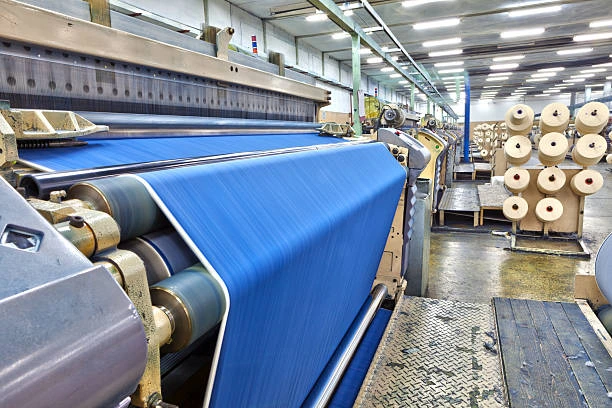
From fiber treatment to dyeing, finishing, and wastewater management, to Use Sulphuric Acid in Textile Chemicals is fundamental to the industry. Its ability to enhance efficiency, improve fabric quality, and regulate key chemical processes makes it indispensable. However, responsible handling, compliance with safety standards, and sustainable alternatives are crucial for reducing its environmental impact.
Conclusion
As textile processing continues to evolve, staying informed about chemical advancements, sustainability efforts, and industry regulations is key. Use Sulphuric Acid in Textile Chemicals is part of the main knowledge base in this industry. Whether you’re a manufacturer, researcher, or industry expert, exploring emerging trends and best practices can help you optimize textile production. Consider consulting industry specialists, joining textile chemistry forums, or attending relevant conferences to stay ahead in this dynamic field.
Frequently asked questions
1. What is sulphuric acid used for in the textile industry?
Sulphuric acid is used for dyeing, bleaching, and finishing processes. It helps in removing impurities, such as natural oils, from fabrics and assists in the preparation of textiles for further processing.
2. What are 5 uses for sulphuric acid?
- Production of fertilizers (mainly ammonium sulfate)
- Petroleum refining
- Manufacturing of chemicals like hydrochloric acid
- Cleaning and pickling of metals (removes rust)
- pH adjustment in water treatment
3. What is the biggest use of sulfuric acid?
The primary application of sulfuric acid is in the manufacturing of fertilizers, particularly phosphate fertilizers such as ammonium sulfate.
Also Read: Textile Chemicals: The Secret Sauce Behind Your Clothes
